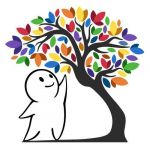Not a member of Pastebin yet?
Sign Up,
it unlocks many cool features!
- References:
- U.S. Department of Health and Human Services – Children’s Bureau (2020). “Adverse Childhood Experiences (ACEs).” Retrieved 28 April 2020 from https://www.childwelfare.gov/topics/preventing/preventionmonth/resources/ace/
- National Survey of Children’s Health (2016). “Trends in Adverse Childhood Experiences.” Retrieved 28 April 2020 from https://www.childtrends.org/indicators/adverse-experiences
- Street, A. E., Gibson, L. E., & Holohan, D. R. (2005). Impact of childhood traumatic events, trauma‐related guilt, and avoidant coping strategies on PTSD symptoms in female survivors of domestic violence. Journal of Traumatic Stress: Official Publication of The International Society for Traumatic Stress Studies, 18(3), 245-252.
- Rokach, A., & Philibert-Lignières, G. (2015). Intimacy, loneliness & infidelity. The Open Psychology Journal, 8(1).
- You struggle with self-loathing
- Teicher, M. P., Anderson, S. L. (2011). The Neurobiological Consequences of Early Stress and Childhood Maltreatment. Neuroscience & Biobehavioral Reviews, 27 (10); 33-44.
- Bovarnick, S. (2007). Child Neglect: Short-term and Long-term Outcomes. London: National Society for the Prevention of Cruelty to Children.
- DeLoe, J. (2016). “15 Common Signs of Unresolved Trauma.” Retrieved 28 April 2020 from https://www.healthyplace.com/blogs/traumaptsdblog/2016/06/15-common-signs-of-unresolved-trauma
- Broady, K. (2018). “20 Signs of Unresolved Trauma.” Retrieved 28 April 2020 from https://www.discussingdissociation.com/2009/07/20-signs-of-unresolved-trauma/
Advertisement
Add Comment
Please, Sign In to add comment

